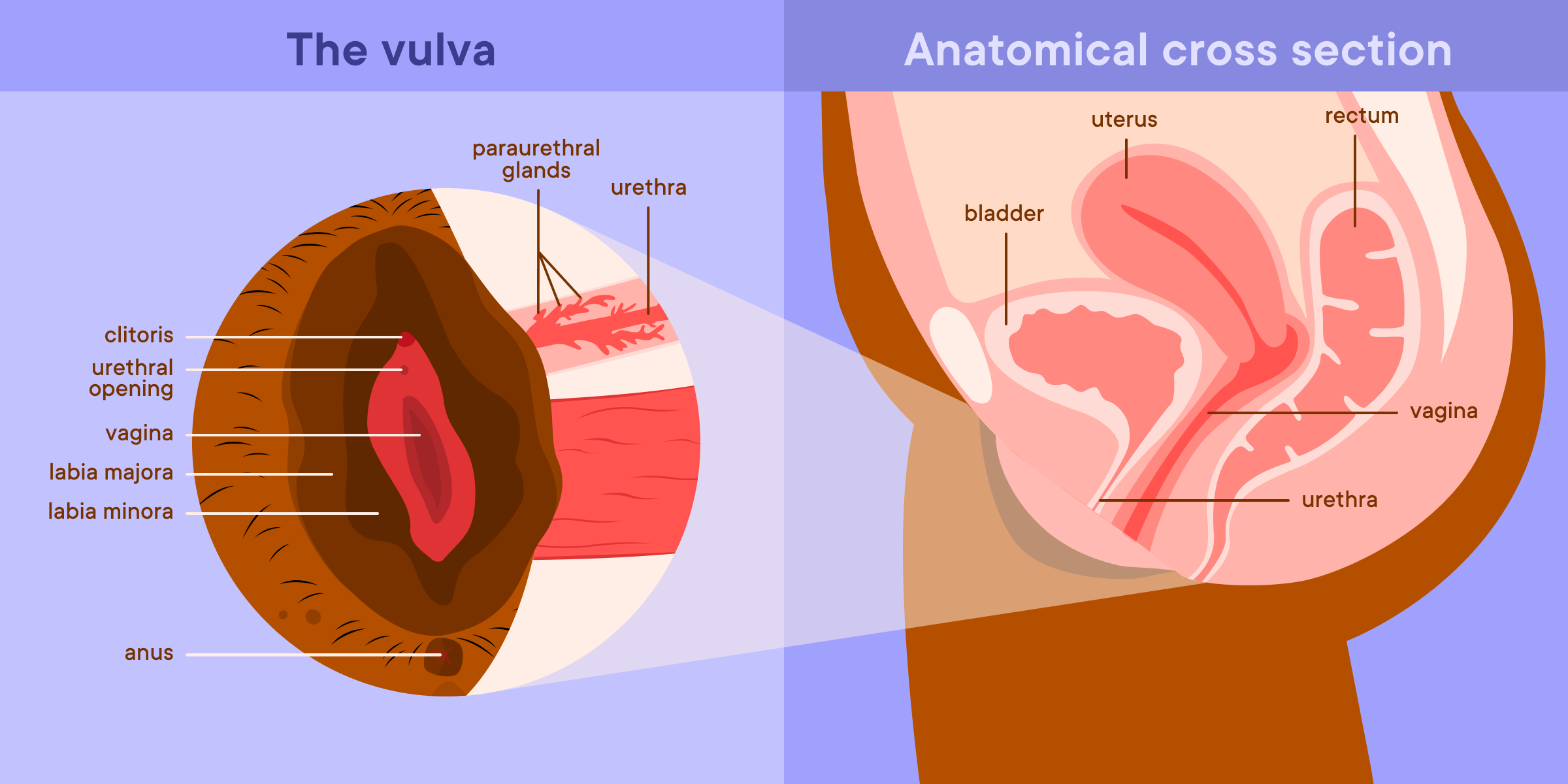Illustration by Emma Günther
Female ejaculation and squirting: What’s the difference?
While these terms are often used interchangeably, they are not the same thing.

Female ejaculation*, squirting, vaginal lubrication, and coital incontinence: all terms that are often used interchangeably. But are they the same thing? Not quite. This article will explain what they really mean and how they differ.
Let’s start with some basics: When people with vulvas (vulvae) get sexually aroused, there’s extra blood flow to the tissue of the vagina, which creates a pressure that allows for filtered blood plasma (that’s the liquid part of your blood—yes, you read that correctly) to seep through the vaginal walls (1). That’s vaginal lubrication (1). But during sex, it’s possible to experience other kinds of involuntary fluid emissions. For some, this consists of a small amount of milky fluid (1). Others report “squirting” much more—enough to soak the bed (1). Until 2011, there was no agreement among scientists regarding the composition of these fluids (1). Scientists referred to any involuntary emission of fluid from the vulva as “female ejaculation”. Researchers now know female ejaculation and squirting are different things (1).
What is female ejaculation?
Researchers have found female ejaculation to be the secretion of about 1 ml of thick white milky fluid from the paraurethral glands, an organ located on either side of the urethra (where urine exits the body) (1). The paraurethral glands are also known as the Skene’s glands, or “the female prostate” (1). People who experience female ejaculation report it happening with or without orgasm (1). Female ejaculate has been shown to contain a high quantity of prostate-specific-antigen (PSA), fructose, and glucose, a similar composition to seminal fluid (the male ejaculate) (1). Ejaculate fluid is different from the fluid that lubricates your vagina during sexual arousal, or when you “get wet” (2).

Interestingly, the Skene’s glands are sometimes called the “female prostate,” and they originate from the same developmental tissue as the male prostate (3). The female prostate is only found in every two to three people with vulvae, and the purpose of the female prostate remains unclear (3,4).
What is squirting?
Often featured in porn, squirting is the release or gushing of tens to hundreds of milliliters of clear fluid from the urethra, usually during orgasm or high arousal (1). Through some very interesting study designs and the use of pelvic ultrasound and biochemical analysis, researchers have been able to demonstrate that squirting fluid comes from the bladder (5,6).
Is squirting just urine then?
The large volume of clear fluid released in squirting has been found to contain urea, creatinine, and uric acid, which confirms that it’s produced in the kidneys and collected in the bladder (1). Is it just urine, then? Well, there’s no agreement among scientists whether the biochemical composition of squirting fluid is identical to urine or is actually its diluted form (1). This may depend on the amount of urine already present in the bladder at the start of sexual arousal (1). More research about female sexual physiology is needed. Squirting fluid may also contain a small amount of PSA, glucose, and fructose, suggesting that female ejaculation and squirting can happen at the same time (1).
Some people who have forms of urinary incontinence may experience leakage of urine during vaginal penetration or orgasm (called coital incontinence) (2). This is different from squirting (2). For these individuals seeing a healthcare provider to discuss medications or pelvic floor therapy may be beneficial (7).

How common are female ejaculation and squirting?
Since many studies do not distinguish between female ejaculation and squirting, it’s difficult to know for sure. Based on the studies we do have, it’s estimated that the prevalence of female ejaculation may be as high as 54% (1). The prevalence of squirting may be around 5% (1). More research is needed to know the true numbers. That means not everyone with a vulva will experience female ejaculation or squirting. You can read more about people's experiences with squirting in this article.
*We recognize that terms like “female ejaculation” and “female prostate” do not accurately represent the bodies and identities of all of our readers. The information in this article is based on research studies, and the gender- and sex-based language used most accurately reflects their research design and study participants. You can read more about accessibility and gendered language at Clue here.